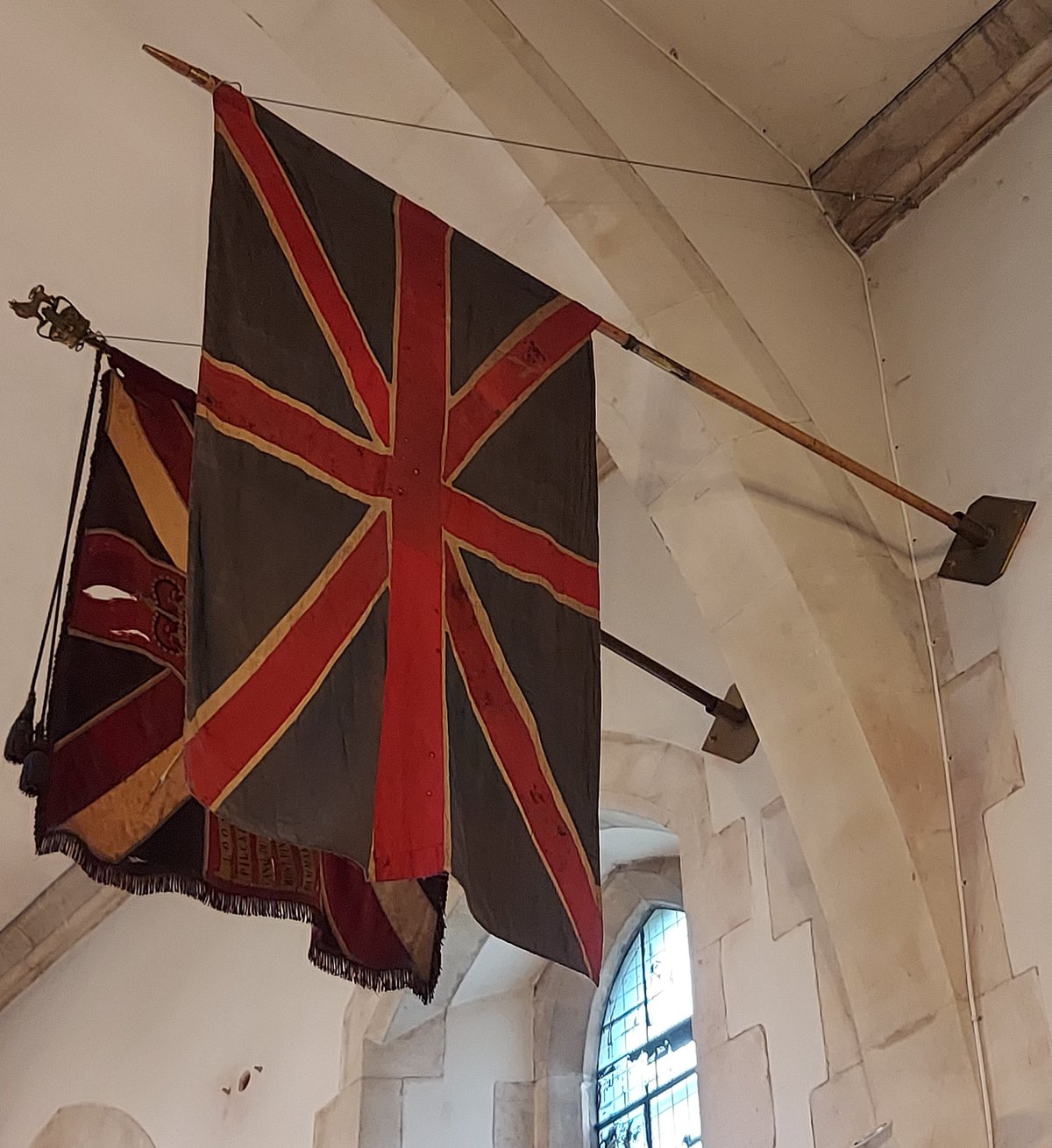VJ Day: Church displays Union Jack sewn by Far East prisoners of war

A Union Jack flag made by prisoners of war from materials salvaged around their camp is displayed in a Swansea church.
The Far East Prisoner of War Union Jack was sewn by prisoners using material from their white loincloths, the blue mosquito nets of the guards and the red lining from the straw hats of the Indonesian native troops. It was used in the burial of British troops at the camp after liberation.
The unique flag was presented to St Mary’s Church in Swansea city centre 50 years ago by Captain Sydney Armstrong, President of the South West Wales Far East Prisoner of War Club, and today hangs on the North Wall of the nave, alongside the Regimental Colours of the 1st Battalion of the Welsh Guards, and a short description of its history.
It hangs as a memorial to all Far East Prisoners of War killed during World War Two, including the tens of thousands who died building the Sumatra Railway, the “Pekanbaru Death Railway”. Captain Armstrong, from Swansea and a prisoner of war for three years, commanded the British troops in one of the 17 POW camps alongside the railway line.
The flag’s history has been researched by Paul Murray, a parishioner at St Mary’s.
He said: “Almost everyone will have heard of the Bridge on the River Kwai, on the Burma/Thai railway, maybe through the romanticised 1957 film, where some 12,000 prisoners of war lost their lives. But the Pekanbaru railway became known as the ‘forgotten death railway’ because it was outside the battle area.
“It was designed to connect Pekanbaru to Muaro to strengthen the military and logistical infrastructure for coal and troop shipments. The 220km (137 mile) long railway would connect the Strait of Malacca, via the Siak river to Pekanbaru, and to Padang via an existing railway from Muaro. The railway was completed on VJ day 15th August 1945 and was never used for its intended purpose.
“It is not known how many Indonesian forced workers – ‘Romushas’ died in the construction of the railway, but it was many tens of thousands, and they were buried on the spot where they died, often by the side of the railway. 706 PoWs died before VJ Day with a further 110 deaths in the following months. There were 182 deaths among the British.
“On Camp 3 there were 30 deaths, including three British who died after hostilities had ended. They were buried in the camp cemetery and would probably have had the ‘St Mary’s Union Jack’ covering their bodies for burial. After the war all these bodies, apart from one, were exhumed and now rest at the Jakarta War Cemetery.”
Surviving Camp 3 with Captain Armstrong was another Welshman. Penry Markham Rees came from Skewen and recorded his experience as a PoW in a powerful and poignant poem called, At The Going Down Of The Sun. In later life he became Headmaster of Bassaleg Grammar School near Newport, and as a devout Christian, he was a noted Congregationalist/URC lay preacher at Victoria Avenue Church, Newport. Archbishop John, a pupil at Bassaleg during his headship, describes him as “one of his heroes”.
Canon Ian Rees, Rector of St Mary’s, said: “We are honoured to have this flag in St Mary’s. It reminds us of the great sacrifice made by others and the struggles they faced. As we face our own challenges today we are encouraged to remember God's love and faithfulness in every situation at every period in our lives."